•• a c r e a t i v e l i f e
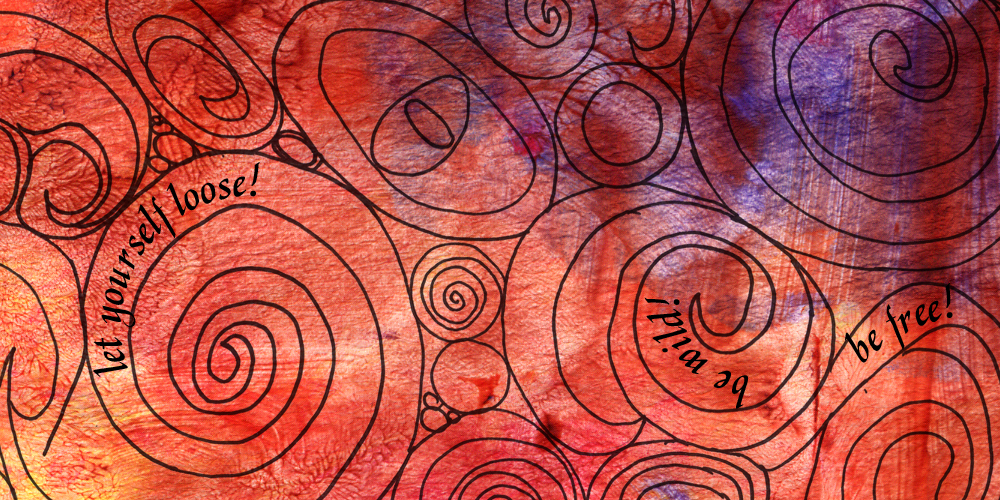
Creativity is the foundation of this site and more importantly, a well-enjoyed life. It doesn't matter whether
one is a poet, painter or plumber; anyone can participate in a creative life. The ingredients are simple and
free: imagination, curiosity and a desire to explore. Libraries and museums are great places to start for
variety and inspiration. Here are a few sites worth exploring:
- The United States Library of Congress has extensive online resources. The Prints and Photographs division
is one of my favorite places to poke around for a few minutes or more!
https://catalog.loc.gov/
- Project Gutenberg offers over 57,000 free ebooks, no special apps or devices required.
https://www.gutenberg.org/
- The Metropolitan Museum of Art is a feast for the eyes with a variety of rotating exhibitions
and permanent treasures.
https://www.metmuseum.org/
Books are a great resource for prodding creative exercises. There are numerous creative writing books,
and some of my favorites are
Writing Down the Bones, Freeing the Writer Within and
Wild Mind: Living the Writer's Life by Natalie Goldberg and
Steering the Craft by
Ursula Le Guin. For those who say, "I can't draw!" I would recommend the
Draw 50 series
by Lee J. Ames. His books are written for children, but anyone can benefit from the step-by-step
instructions with basic shapes to learn to draw animals, vehicles and even people! The same is true
for Ed Emberley's series of drawing books.

Wondering how to inject more creative energy into your day? Why not give yourself some assignments?
A few to get you started:
- Make some mud! Take 20 minutes to mix different colors from a watercolor tray. Try mixing
colors with a little water (dry technique) then a lot of water (wet on wet technique). You'll be
surprised what color combinations come to light!
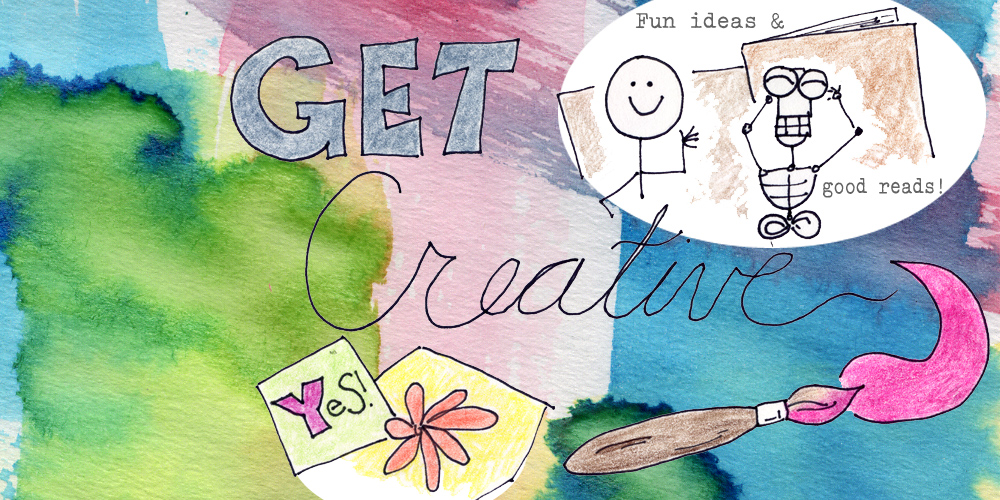
- Get doodle-y! Give yourself a blank page and black marker and start drawing shapes - circles,
squares, curvy noodles and squiggles. Let the pen go! You can even try some
stick figures if you like - they're easy. Pair an expression with a body and you
are on your way!
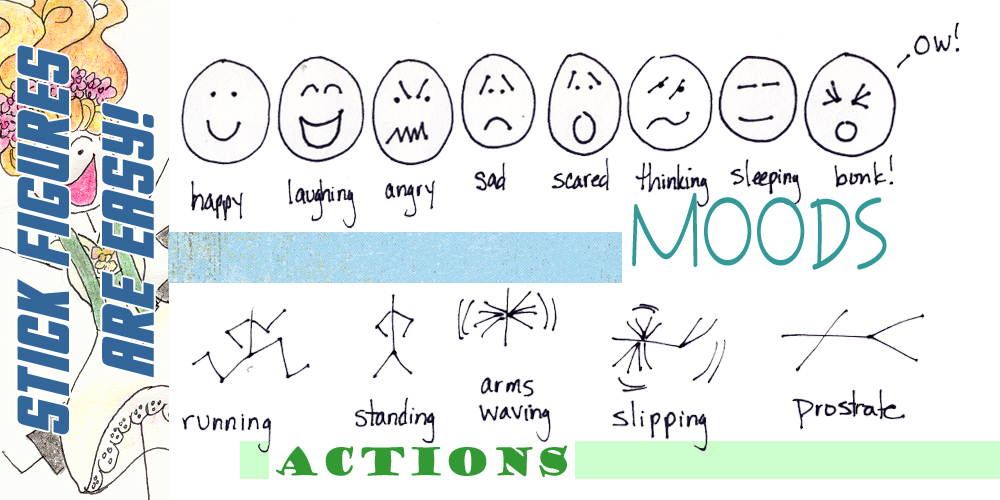
- Be a sunlight seeker! Can you find sunlight in unexpected places? An unused closet? A corner
of the room? Watch how indirect sunlight changes the appearance of materials, from cloth
to food.
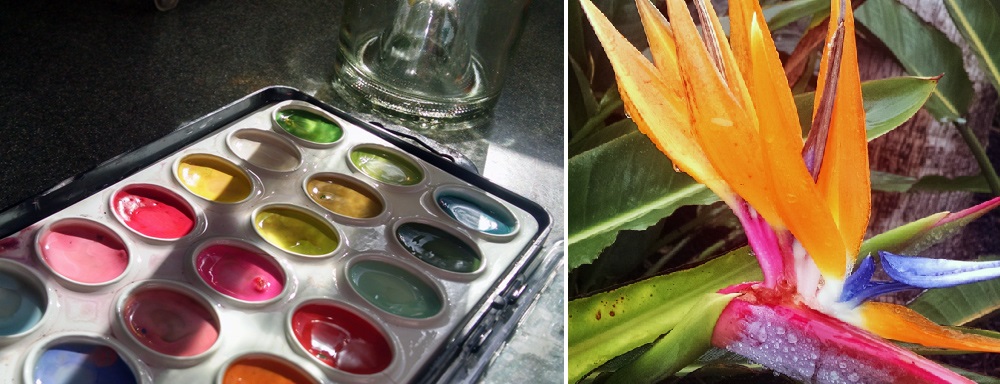
- Haiku are you? Write a haiku: first line is five syllables, second line is seven syllables,
third line is five syllables.
it is easy to
write a haiku; good content
is more difficult
- Run with scissors! Make a collage from images cut from magazines or other printed
material. True, craft stores offer amazing selections of papers and embellishments, but
you can achieve similar results for next to nothing.
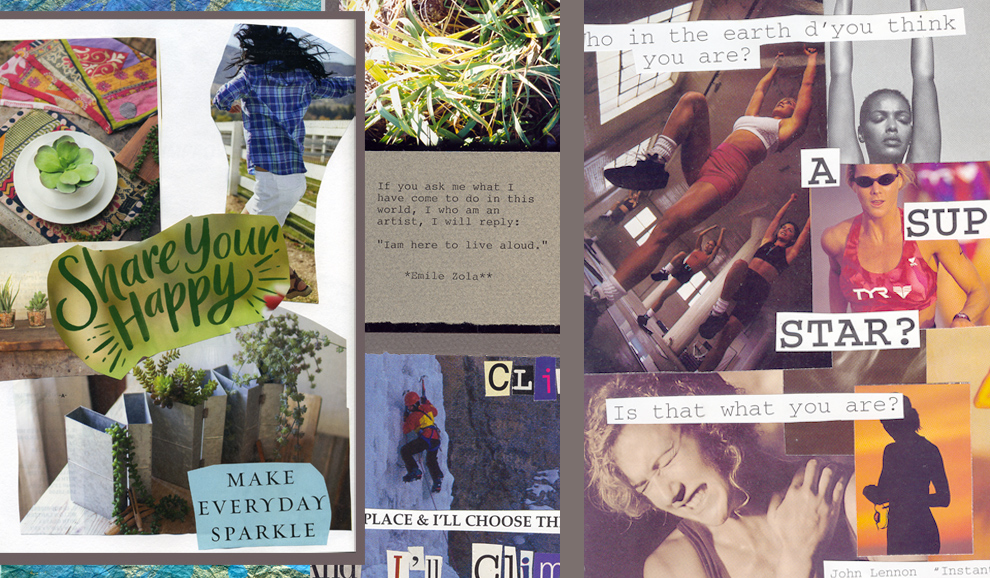
- Title thyself! It started with a pendant I liked showing an anicent Egyptian cartouche.
I wanted to know what each side meant, and that led to an interesting search and discovery.
A "cartouche" is an oval or oblong shape enclosing hieroglyphic names of Egyptian
royalty, usually pharaohs. The Abydos King List is a table inscribed with a list of 76 kings
of ancient Egypt found on a wall of the Temple of Seti I at Abydos, Egypt. (Seti I was a pharaoh
of the New Kingdom 19th dynasty and father of Ramesses II.) I couldn't find the pendant cartouches
in the King List, although a couple - such as for Tuthmosis III - looked similar. It turns out
that both cartouches were prenomen (throne names) for pharaohs that came later: Tutankhamun and
Ramesses II. Pharaohs had up to five distinct names; the prenomen and nomen (throne and personal
names) are often carved together in monuments and temples.
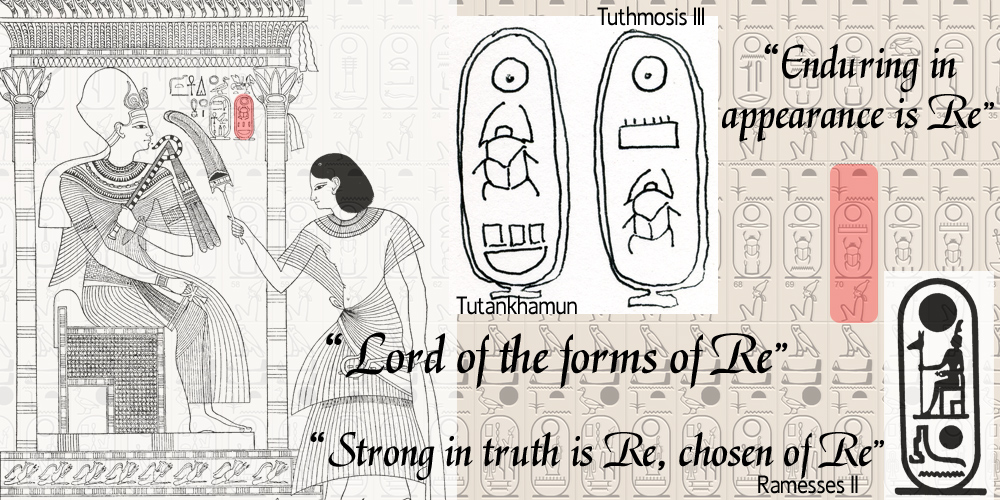
Prenomens usually contain descriptions in terms of the sun-god Re, such as Tutankhamun's
"Lord of the forms of Re" or Ramesses II's longer "Strong in truth is Re,
chosen of Re" while nomens contained the personal name (Tutankhamun, Ramesses II).
Using the book Decoding Egyptican Hieroglyphs by Bridget McDermitt, I created some
cartouches for myself. Egyptian hieroglypics can be read left to right or right to left, and
the direction is dictated by the orientation of the hieroglpyhs themselves; figures face the direction
from which they should be read.
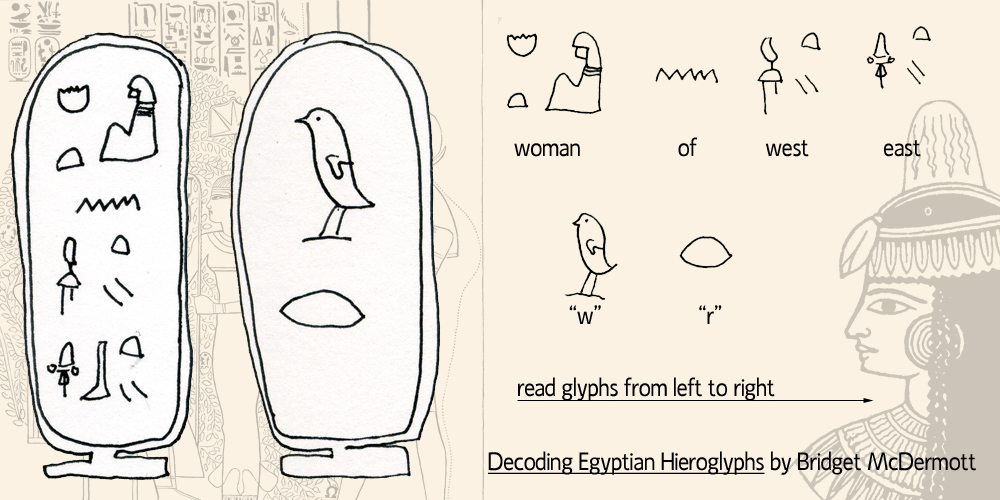
I chose hieroglyphs for "woman of west east" as my prenomen (raised in the west
with education in the east) and "W R" as my nomen for "valor". Find the
book and try it! It's quite fun.


 Creativity is the foundation of this site and more importantly, a well-enjoyed life. It doesn't matter whether
one is a poet, painter or plumber; anyone can participate in a creative life. The ingredients are simple and
free: imagination, curiosity and a desire to explore. Libraries and museums are great places to start for
variety and inspiration. Here are a few sites worth exploring:
Creativity is the foundation of this site and more importantly, a well-enjoyed life. It doesn't matter whether
one is a poet, painter or plumber; anyone can participate in a creative life. The ingredients are simple and
free: imagination, curiosity and a desire to explore. Libraries and museums are great places to start for
variety and inspiration. Here are a few sites worth exploring:






